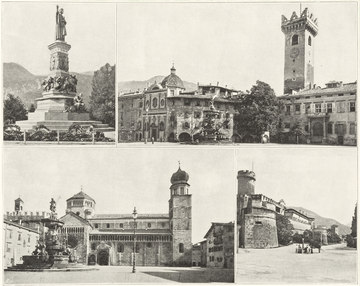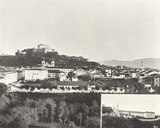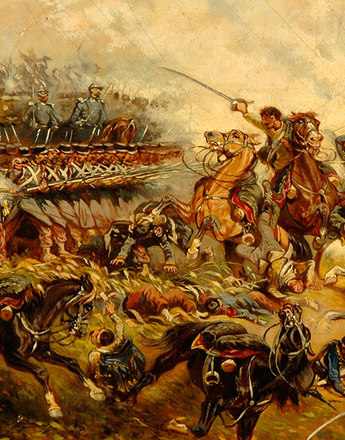Even after the expulsion of the Habsburgs from northern Italy had greatly reduced the proportion of Italians in the overall population of the Monarchy, they still enjoyed a privileged position as compared with most of the other nationalities under Habsburg rule.
In the first half of the nineteenth century the Italians were one of the largest peoples in the Habsburg Monarchy. Together, the Habsburg provinces of Lombardy and Venetia made up a culturally and economically highly developed region, containing such important cities as Milan and Venice. For Emperor Franz Joseph the loss of the two provinces in 1859 and 1866 respectively was not only a painful political defeat but also a severe economic blow. In the pre-March period around 60 per cent of all the Monarchy’s manufactories were situated in Lombardy. The tax yield of the northern Italian provinces amounted to 30 per cent of the Monarchy’s overall tax revenue, even though in terms of population they represented only 15 per cent of the Monarchy as a whole.
After the loss of Lombardy-Venetia the roughly 800,000 Italians still under Austrian rule were one of the smallest language groups in the Monarchy, with a mere 2.8 per cent of the overall population (1910).
The Italian areas of settlement were concentrated in the Austrian half of the Monarchy. The southernmost area of the Tyrol centring on the ancient episcopal city of Trent (German: Trient, Italian: Trento) was predominantly populated by Italians; now the ‘Trentino’, the area’s historical German name was ‘Welschtirol’ (‘the Italian-speaking Tyrol’). In the census of 1910, 42.1 per cent of the overall population of the crown land of the Tyrol were registered as belonging to the Italian language group.
In the nineteenth century over-population led to large numbers of Italians leaving the Trentino and moving as migrant workers to other regions. In Vorarlberg, for example, where Italians settled in the industrial towns of the Rhine valley, they finally made up 4.4 per cent of the population.
The Italians constituted a larger proportion of the population in the Austrian crown land of the Litoral (German: ‘Küstenland’, made up of the county of Görz, Trieste and Istria). Trieste (German: Triest) was the most important Italian city of the Habsburg Monarchy, with 62.3 per cent of its inhabitants being Italian-speakers. In addition to these Italians of Austrian citizenship, the city was also home to many citizens of the new nation-state of Italy, which strengthened the Italian element still further.
In the historic county of Görz the Italians made up 36 per cent of the population and lived in the area around Gradisca down towards the Adriatic coast. On the peninsula of Istria the Italians counted for 38.2 per cent of the population, though in this case there was a clear distinction between the Italian-dominated ports and the rural hinterland, which was mainly inhabited by Croats and Slovenes.
That there was an Italian presence in Dalmatia was a hangover from the long years of Venetian rule. Although with only 2.8 per cent of the population they were numerically weak and restricted to a few coastal towns such as Zadar (Italian: Zara), the local Italian elites still insisted that the region possessed a certain intrinsic Italianitá on account of its historical background.
The number of Italians in the Hungarian half of the Monarchy was statistically insignificant, the only important Italian community being in the free city of Rijeka (Italian: Fiume).
Two other groups that were often counted amongst the Italians were the Ladins in the valleys of the Tyrolean Dolomites and the Friulians in the western parts of the county of Görz. It is difficult to determine the number of speakers of these Rhaeto-Romance languages, as they were not accounted for separately in the official statistics. Both the Ladins and the Friulians had a strong sense of regional identity and resisted the paternalist encroachments of the Italian nationalists, who denied that they the smaller peoples had separate national cultures in their own right and tried to gather them into their own cultural fold.
Translation: Peter John Nicholson
Corsini, Umberto: Die Italiener, in: Wandruszka, Adam/Urbanitsch, Peter (Hrsg.): Die Habsburgermonarchie 1848–1918, Band III: Die Völker des Reiches, Wien 1980, Teilband 2, 839–879
Rumpler, Helmut/Seger, Martin (Hrsg): Die Habsburgermonarchie 1848–1918, Band IX/2: Soziale Strukturen, Wien 2010



